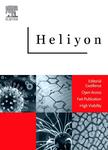版权所有:内蒙古大学图书馆 技术提供:维普资讯• 智图
内蒙古自治区呼和浩特市赛罕区大学西街235号 邮编: 010021

作者机构:School of Automobile &Transportation Xihua University Chengdu 610039 China Sichuan Xihua Jiaotong Forensic Science Center Chengdu 610039 China State Administration for Market Regulation Defective Product Recall Technical Center (DPRC) Beijing 100101 China China Automotive Engineering Research Institute Chongqing 401122 China Key Lab of Forensic Science Ministry of Justice China (Academy of Forensic Science) Shanghai 200063 China
出 版 物:《Heliyon》 (Heliyon)
年 卷 期:2025年第11卷第1期
页 面:e41073页
基 金:Wuhan Science and Technology Project, (2022YFG0095, H231291, H232270) Wuhan Science and Technology Project Intelligent Vehicle Traffic Accident Scenario Reconstruction and Its Safety Identification Application Research, (KF202211) National Key Research and Development Program of China, NKRDPC, (2023YFC3009703) National Key Research and Development Program of China, NKRDPC
主 题:Autonomous vehicles Clustering algorithm Decision-making system Fuzzy comprehensive evaluation Perception system Test scenario
摘 要:Testing autonomous vehicles (AVs) in hazardous scenarios is a crucial technical approach to ensure their safety. A key aspect of this process is the generation of hazard scenarios. In general, such scenarios are generated through cluster analysis of traffic accident data. However, this approach may not fully capture the criticality of the generated scenarios, as it tends to emphasize the statistical characteristics of the data rather than its real-world applicability. This paper proposes a novel method to enhance scenario adaptation by integrating quantization weights with a new clustering algorithm. These weights, representing the correlation between scenario elements and the AV system, are calculated using fuzzy comprehensive evaluation (FCE). The proposed method is applied to 1044 pedestrian accident cases in China, resulting in the identification of nine categories of typical scenarios and corresponding test schemes for both the perception and decision-making systems of AVs. The results show that the new method increases the proportion of critical scenarios by 17.4 % and 13.6 %, respectively, compared to traditional methods. Overall, the critical scenarios generated in this paper can significantly improve the testing efficiency and safety of AVs. © 2024 The Authors